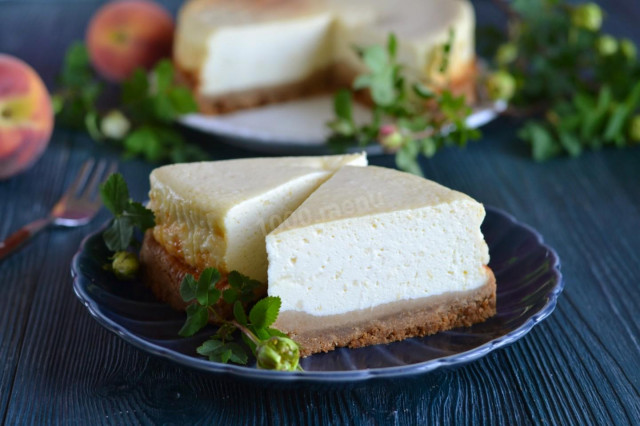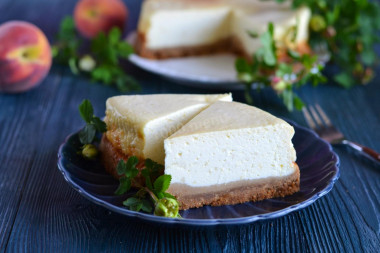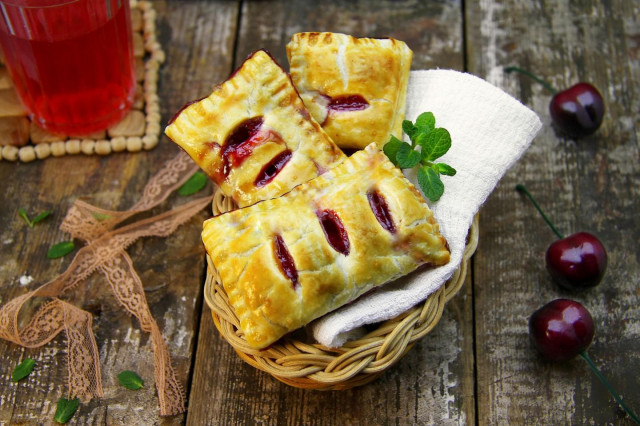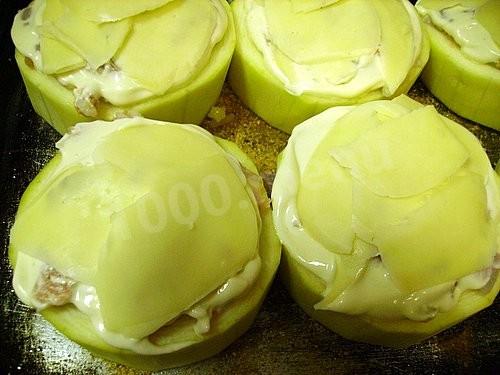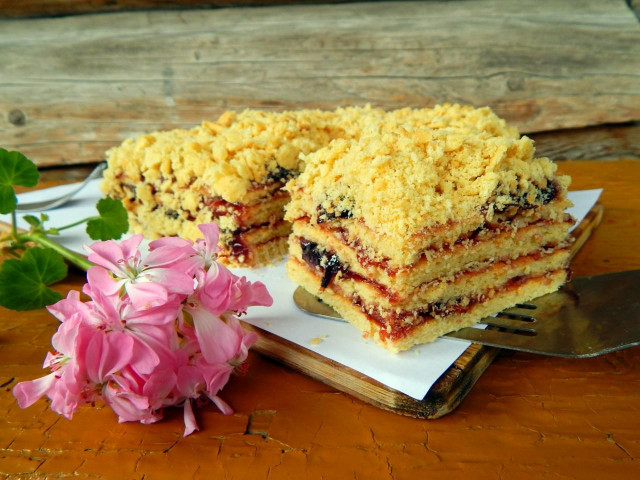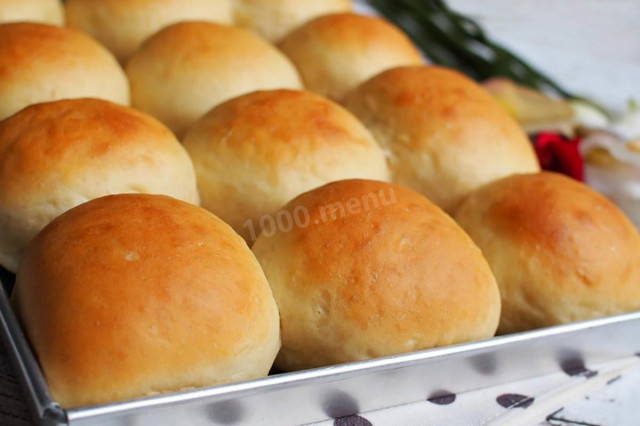Composition / ingredients
Step-by-step cooking
Step 1:
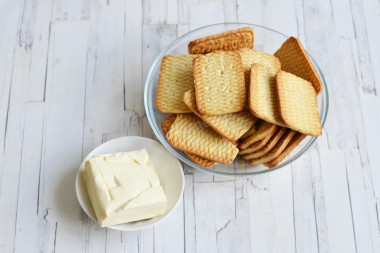
Prepare the necessary ingredients to prepare the base. Cookies can be used sugar or biscuit, with additives in the form of ground nuts, pieces of chocolate or ordinary.
Step 2:

Melt the butter over low heat or in the microwave and cool to room temperature.
Step 3:

Chop the cookies into fine crumbs in a blender. You can chop cookies with your hands or with a rolling pin instead of a blender.
Step 4:

Pour the butter into the cookies and whisk everything in a blender again.
Step 5:
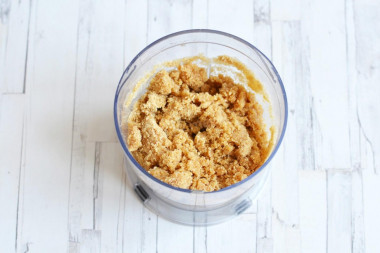
A moist homogeneous crumb should be obtained.
Step 6:
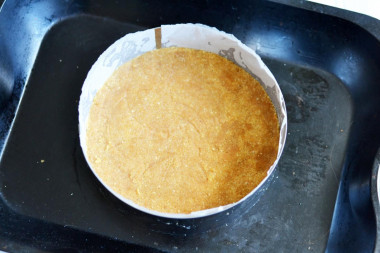
Line the baking dish with greased baking parchment. So the cheesecake will be convenient to take out and it will not stick. I used a cooking ring without a bottom with a diameter of 20 cm. A split mold with a diameter of 20 to 24 cm is also suitable . Put the cookies in the mold and tamp well, trying to make the cookies fit snugly against the walls and the semi-liquid filling does not leak out. If desired, you can form the sides *. Put the cookie mold in the refrigerator.
Step 7:

Prepare all the necessary ingredients for the filling. In order for the cheesecake to have a soft cream filling, it is better to use soft cottage cheese with a fat content of 5-9%. Sour cream must be thick to have a spoon in it. Before using cottage cheese and sour cream, drain the whey from them, if there is any.
Step 8:
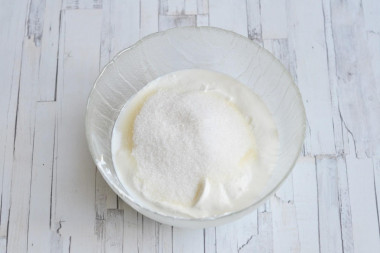
Put the soft cottage cheese in a bowl, add sugar and beat with a mixer until fluffy.
Step 9:
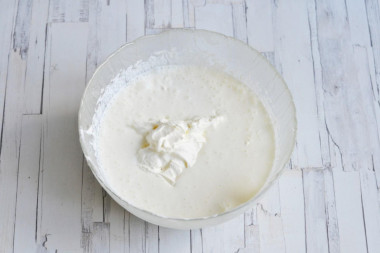
Add sour cream and mix with a mixer on low speed until smooth.
Step 10:
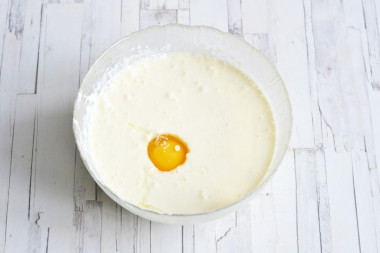
Add the eggs one at a time, beating the mass until smooth each time. Eggs can greatly dilute the mass, especially if the mass was not very thick before. Therefore, it is better to use medium-sized eggs. If the mass is still very liquid, sift 1-2 tablespoons of flour directly into it and mix the mass. Leave for 5-8 minutes so that the flour swells and thickens the mass. Flour can also be replaced with corn starch.
Step 11:
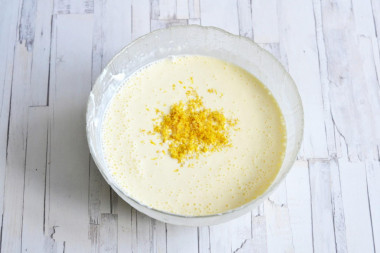
At the end, pour in the lemon zest and mix with a spoon or spatula. It is better not to use a mixer, since all the zest will gather on the corollas.
Step 12:
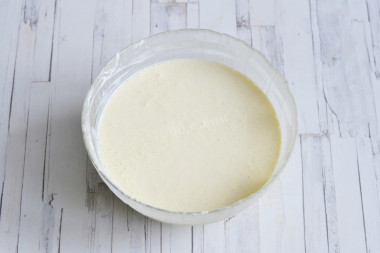
The final mass should be fluid, but not like water, but slightly viscous.
Step 13:
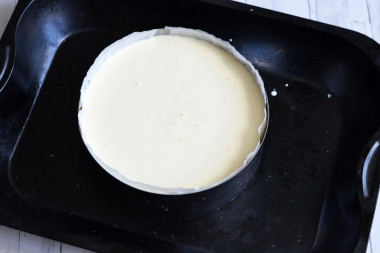
Place the mold with the base on a baking sheet lined with parchment. Pour the filling onto the cookie base. It will disperse itself in an even layer. At the same time, it is advisable not to immediately pour out the entire filling. First pour a little spoon along the sides of the mold to check whether the filling will flow between the cake and the mold. If everything is fine, you can pour out the rest of the mass.
Step 14:
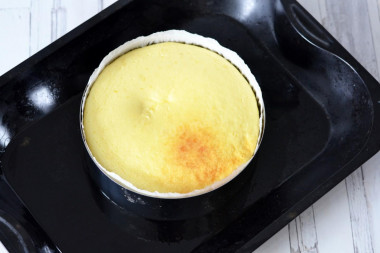
Bake the cheesecake for about 1 hour at 170 ° C, then let it stand in the cooling oven with the door open for another 10-15 minutes. At first, the cheesecake will rise a lot. But as it cools down, it will fall off and take an even shape. In a hot cheesecake, the middle will tremble.
Step 15:
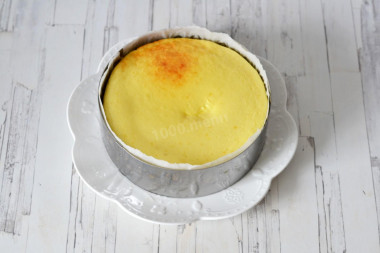
Completely cool the cheesecake at room temperature, then refrigerate for 6-8 hours to cool completely. As the filling cools, it will acquire the density of a classic cheesecake.
Step 16:

Cut the cheesecake into portions and serve to the table. Enjoy your meal!
* If you want to make sides from crumbs, then you need more cookies - 300-320 g. Increase the amount of oil by 10-15 g.
Caloric content of the products possible in the composition of the dish
- Sour cream with 30 % fat content - 340 kcal/100g
- Sour cream of 25% fat content - 284 kcal/100g
- Sour cream with 20% fat content - 210 kcal/100g
- Sour cream of 10% fat content - 115 kcal/100g
- Sour cream - 210 kcal/100g
- Chicken egg - 157 kcal/100g
- Egg white - 45 kcal/100g
- Egg powder - 542 kcal/100g
- Egg yolk - 352 kcal/100g
- Ostrich egg - 118 kcal/100g
- Cottage cheese of 40% fat content - 466 kcal/100g
- Cottage cheese of 20% fat content - 233 kcal/100g
- Cottage cheese of 18% fat content - 226 kcal/100g
- Cottage cheese of 10% fat content - 156 kcal/100g
- Low-fat cottage cheese - 75 kcal/100g
- Cottage cheese with sour cream - 260 kcal/100g
- Fruit cottage cheese - 147 kcal/100g
- Soft dietary cottage cheese - 170 kcal/100g
- Vitalinia cottage cheese - 64 kcal/100g
- Cottage cheese "morning" ( "danone") without sugar - 91 kcal/100g
- Cottage cheese - 156 kcal/100g
- Granulated sugar - 398 kcal/100g
- Sugar - 398 kcal/100g
- Butter 82% - 734 kcal/100g
- Amateur unsalted butter - 709 kcal/100g
- Unsalted peasant butter - 661 kcal/100g
- Peasant salted butter - 652 kcal/100g
- Melted butter - 869 kcal/100g
- Coffee cookies - 589 kcal/100g
- Waffle cookies - 540 kcal/100g
- Kurabye cookies - 489 kcal/100g
- Butter cookies - 510 kcal/100g
- Chocolate cookies - 406 kcal/100g
- Lemon zest - 47 kcal/100g

